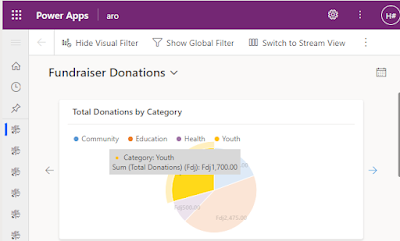Model-driven app design is a method that focuses on adding
elements to tables using an app designer tool, such as forms, views, charts,
and dashboards. Relationships also link tables together in a way that makes it possible
to navigate between them and guarantees that data is not duplicated needlessly.
You may create simple or extremely complicated apps with the
app designer with little or no coding.
Process
driven apps
Process-driven apps that are data-dense and make it simple
for users to switch between related records are particularly well suited for
model-driven apps. A model-driven app is an excellent option, for instance, if
you're creating one to handle a complicated process like onboarding new
employees, managing a sales process, or member connections in a company like a
bank.
Data
modeling
Even though they are referred to as model-driven apps, it is
frequently simpler to conceive of them as data model-driven apps. This is due
to the fact that you cannot develop model-driven software without a data
model stored within Microsoft Dataverse.
User
experience
From the user's perspective, all model-driven apps provide a
comparable experience that is available to a wide range of users and
independent of the device being used. The encounter is comparable to the
illustration below.
Three tables (challenges, ideas, and team projects) are
included in the software, along with a dashboard and other charts and views.
Using the left pane or the dashboard, users can switch between the tables.
Benefits
·
Due to rich component-focused no-code designers,
the construction process is quite quick once the data model and relationships
have been established.
·
Using solutions, and moving apps between
development, test, and production environments is kind of simple.
·
The user interface of apps is the same on all
platforms, including desktop and mobile.
·
The apps are responsive and easily accessible.
What’s
the difference?
|
Canvas |
Model-driven |
|
Leverage data
from different sources |
Back ended by
Dataverse |
|
General task
or screen focused |
Focused on
processes |
|
Customized UI |
Responsive UI |
|
Device
Interaction |
Customizing
existing apps |
|
Embedding
capabilities |
Data
relationship navigation |
Steps:
Log in to the Power Apps portal.
From the left pane,
choose Model-driven.

Summary: In this article we learned Model-driven
Power Apps applications, in our next article we will learn how to do Expense
Report app.





0 Comments